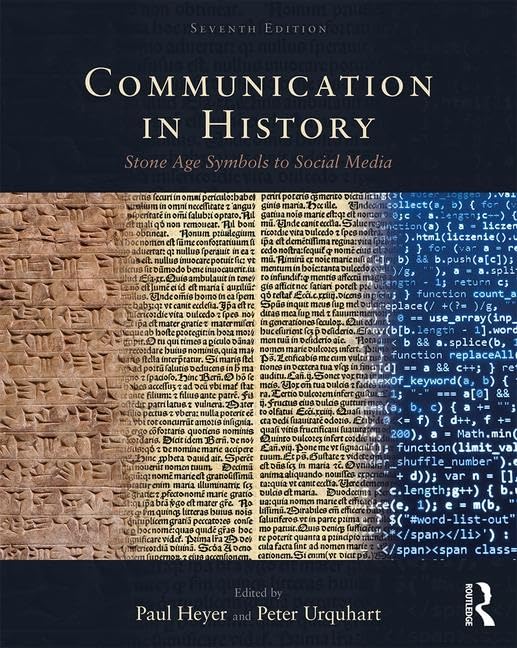Communication is the cornerstone of human interaction, and its evolution from ancient times to the present day is a testament to human ingenuity and adaptability. This article delves into the role of symbols and writing systems in ancient communication, examining the development and significance of early writing systems such as hieroglyphics, cuneiform, and runes. By understanding these ancient methods, we can gain insights into how they shaped modern communication practices.
Key Takeaways
- Development of Writing Systems: Ancient civilizations developed complex writing systems like hieroglyphics, cuneiform, and runes, which were crucial for record-keeping and cultural preservation.
- Symbolism in Communication: Symbols played a significant role in conveying complex ideas and information in ancient times, facilitating communication across generations and cultures.
- Impact on Modern Communication: The evolution of ancient writing systems has had a lasting impact on modern languages and communication technologies.
The Evolution of Ancient Communication
Early Forms of Communication
Before the advent of writing, early humans relied on vocalizations, gestures, and symbolic art to communicate. These methods were essential for sharing information, social cues, and cultural practices within communities. As societies grew more complex, the need for a more sophisticated means of communication became apparent.
The Birth of Writing Systems
The development of writing systems marked a significant turning point in human history. Around 3,200 BCE, ancient Mesopotamia saw the invention of cuneiform, one of the earliest known writing systems. Similarly, ancient Egypt developed hieroglyphics, a complex system of pictorial symbols used for religious texts and administrative records.
Cuneiform
Cuneiform, developed by the Sumerians, is characterized by its wedge-shaped marks on clay tablets. This system evolved from simple pictograms to more abstract symbols representing sounds and ideas. Cuneiform was used for various purposes, including legal documents, trade records, and literature.
Hieroglyphics
Hieroglyphics, used by the ancient Egyptians, combined logographic and alphabetic elements. These symbols were often inscribed on monuments, tombs, and papyrus scrolls. Hieroglyphics played a crucial role in documenting religious rituals, historical events, and administrative activities.
Runes
Runes were used by Germanic tribes and are another example of an ancient writing system. These symbols were often carved into stone, wood, or metal and were used for various purposes, including memorial inscriptions, magical spells, and everyday communication.
Symbolism in Ancient Communication
Symbols were not limited to writing systems; they played a significant role in various forms of ancient communication. From cave drawings to ceremonial artifacts, symbols conveyed complex ideas and cultural values.
Cave Drawings
Cave drawings, such as those found in Lascaux, France, are among the earliest forms of symbolic communication. These drawings often depicted animals, hunting scenes, and abstract patterns, providing insights into the lives and beliefs of early humans.
Ceremonial Artifacts
Ancient civilizations used symbolic artifacts in religious and social ceremonies. These artifacts, such as totems, amulets, and ritual masks, were imbued with cultural significance and conveyed messages about identity, spirituality, and community values.
The Impact of Writing Systems on Ancient Societies
The invention of writing systems had profound effects on ancient societies. It enabled the documentation and preservation of knowledge, facilitated administrative and economic activities, and contributed to the development of complex social structures.
Record-Keeping and Administration
Writing systems allowed for the creation of detailed records, which were essential for the administration of growing civilizations. In ancient Mesopotamia, cuneiform tablets were used to keep track of trade transactions, legal agreements, and tax collections. Similarly, Egyptian hieroglyphics were used to document pharaonic decrees, religious texts, and census data.
Cultural Preservation
Writing systems played a crucial role in preserving cultural heritage. Religious texts, literary works, and historical accounts were recorded and passed down through generations. For example, the Epic of Gilgamesh, one of the oldest known literary works, was written in cuneiform and provides valuable insights into Sumerian mythology and culture.
Education and Literacy
The development of writing systems also led to the establishment of educational institutions. In ancient Egypt, scribes were trained in specialized schools to master the complex system of hieroglyphics. These scribes played a vital role in maintaining administrative records and producing literary and religious texts.
Modern Implications of Ancient Writing Systems
The influence of ancient writing systems extends beyond their historical context. They have had a lasting impact on modern languages, communication technologies, and our understanding of human history.
Influence on Modern Languages
Many modern languages have roots in ancient writing systems. For example, the Latin alphabet, used in many contemporary languages, evolved from the Greek alphabet, which was influenced by earlier Phoenician and Egyptian scripts. Understanding these connections helps linguists trace the evolution of languages and uncover the shared heritage of human communication.
Technological Advancements
The principles of ancient writing systems have influenced the development of modern communication technologies. The concept of encoding information into symbols laid the groundwork for digital communication, where data is represented by binary code. Additionally, the preservation of ancient texts through digitization has made historical documents more accessible to researchers and the public.
Insights into Human History
Studying ancient writing systems provides valuable insights into the social, economic, and cultural dynamics of past civilizations. By deciphering ancient texts, historians and archaeologists can reconstruct historical events, understand societal structures, and gain a deeper appreciation of human ingenuity.
FAQs about Ancient Communication
How did ancient humans communicate before writing systems were developed?
Ancient humans communicated through vocalizations, gestures, symbolic art, and oral traditions. These methods were essential for sharing information, social cues, and cultural practices within communities.
What are the oldest forms of communication?
The oldest forms of communication include sounds, body language, cave drawings, and the use of symbols. These methods were used to convey information and preserve cultural heritage before the advent of writing systems.
What impact did the invention of writing have on communication?
The invention of writing allowed for the preservation of knowledge, culture, and history. It enabled detailed record-keeping, facilitated administrative and economic activities, and contributed to the development of complex social structures.
What methods did ancient cultures use to communicate over distances?
Ancient cultures used methods such as smoke signals, drums, and carrier pigeons to send messages over long distances. These techniques allowed for the transmission of simple messages and played a crucial role in maintaining connections between distant communities.
How did ancient writing systems influence modern communication technologies?
The principles of ancient writing systems, such as encoding information into symbols, laid the groundwork for modern communication technologies. Digital communication relies on similar concepts, where data is represented by binary code. Additionally, the preservation of ancient texts through digitization has made historical documents more accessible.
Related Articles
- History, Concepts, and Theories
- The Early History of Communication
- Exploring How People Communicated in Ancient Times
Understanding the role of symbols and writing systems in ancient communication offers a window into the ingenuity and adaptability of early civilizations.
These early methods laid the foundation for the complex communication networks we rely on today, highlighting the enduring significance of our shared human heritage.


